A Sailors Safe Haven
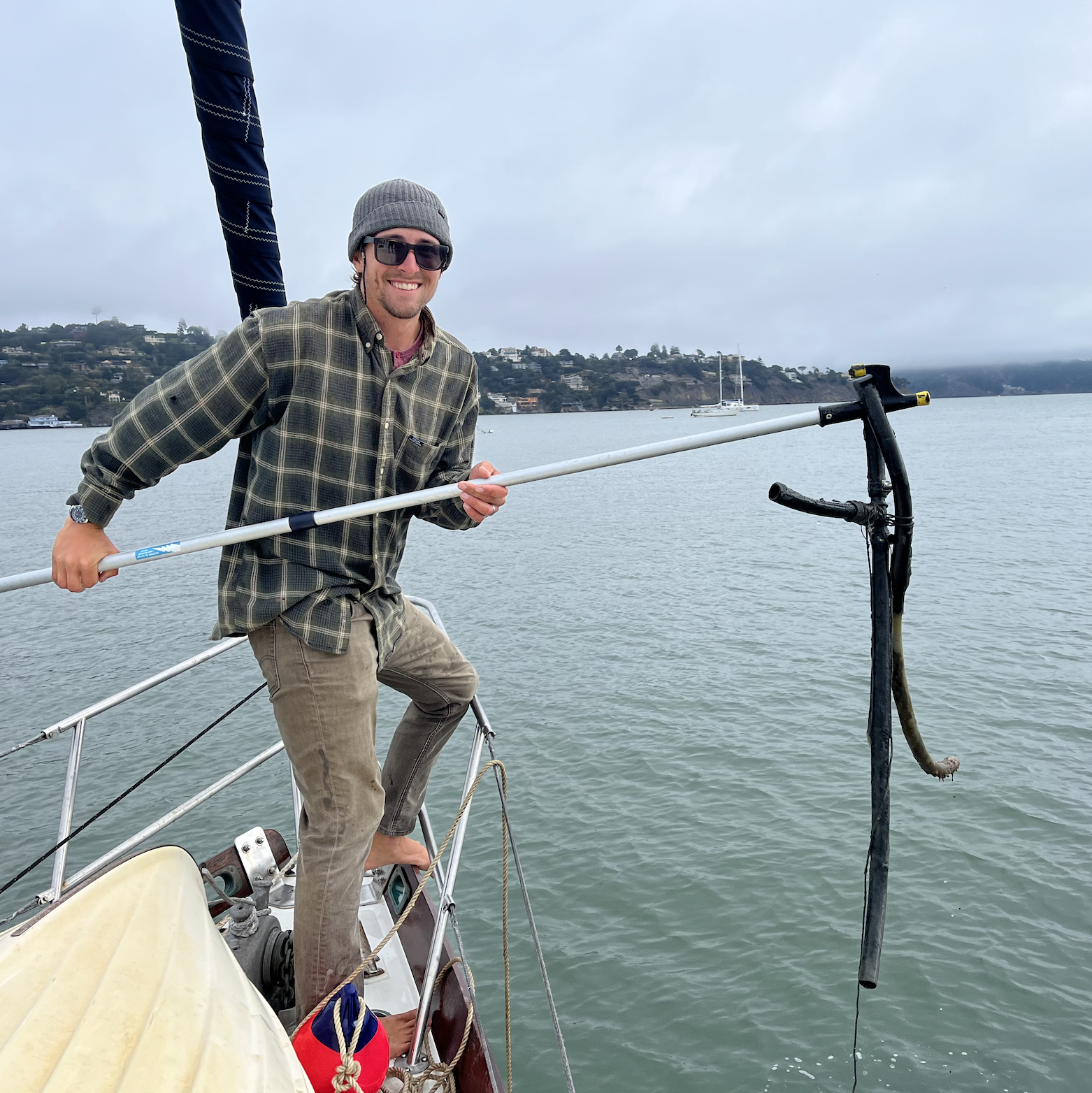 Wind whistled through our rigging as Avocet cut through the bay like a hot knife through butter. The sun was still high in the sky, feeding our solar panels and giving us just enough warmth to not be completely frozen in the otherwise frigid fall air. We had just pulled anchor in Richardson Bay after fighting with our trip line that caught an old bilge hose in the process – our catch of the day. Chris had his anchorage departure routine down; armed with his bucket and scrub brush he made sure the chain was as free of Bay Area muck as he could before it went below deck into the chain locker. A washdown pump would be nice, but he reminded me that in the near future we would be anchored primarily in sand outside of the bay… we hoped. Until then, we would continue to fine tune our anchor pulling practices and put our tools at hand to good use.
Wind whistled through our rigging as Avocet cut through the bay like a hot knife through butter. The sun was still high in the sky, feeding our solar panels and giving us just enough warmth to not be completely frozen in the otherwise frigid fall air. We had just pulled anchor in Richardson Bay after fighting with our trip line that caught an old bilge hose in the process – our catch of the day. Chris had his anchorage departure routine down; armed with his bucket and scrub brush he made sure the chain was as free of Bay Area muck as he could before it went below deck into the chain locker. A washdown pump would be nice, but he reminded me that in the near future we would be anchored primarily in sand outside of the bay… we hoped. Until then, we would continue to fine tune our anchor pulling practices and put our tools at hand to good use.
“I’m not so sure about this… do another lap” I begged as we came up to the man-made-cove. The entrance was narrow, and the outgoing tide created turbulence. Signs warned incoming boaters to watch out for swimmers. “Why don’t furl the headsail, then motor in with the main up?” I suggested. Chris agreed and we followed suit inside the cove, keeping an eye out for any swimmers. Fortunately, we were the only one of two boats in the anchorage, and most of the swimmers stuck closer to shore… for the time being anyways. With the anchor set in a comfortable 15 feet of water with 7:1 scope, we kicked back to enjoy our new digs.

The Anchorage
Aquatic Park Cove is a vibrantly sheltered human-made urban harbor that mimics a natural anchorage, offering a protected area for recreational swimming, sailing and rowing with a beautiful backdrop of one of San Francisco’s most prominent city fronts. Built in 1929, the Aquatic Pier was designed to create a protected cove, and gives the anchorage its iconic horseshoe shape. The East end of the cove is where you will find Hyde Street Pier, which is a National Registered Historic Landmark and home to a fleet of historic vessels belonging to the San Francisco Maritime National Historical Park.
Back in the day, Aquatic Cove used to be a free anchorage, but ever since the Richardson Bay anchor-outs were pushed out, more and more “free” anchorages began to charge a fee to deter the misplaced mariners. To get a permit, you must contact the Park Service who is responsible for the anchorage. Although their website says you can hail the park service on VHF channel 83A, we had no luck and could barely get ahold of them via phone… we were desperate for them to take our money and do the right thing, but they almost made it seem like a hassle. Eventually, we did get through to the guy in charge who was very kind and welcoming, inviting us to come ashore and beach the dinghy at the Park Services private beach that was fenced off from the public beach. That in itself was well worth the $10 for peace of mind that our dinghy wouldn’t be stolen or tampered with in our absence, which we have heard has happened to other boaters in the past.

San Francisco waterfront, with Aquatic Coves dramatic curvature
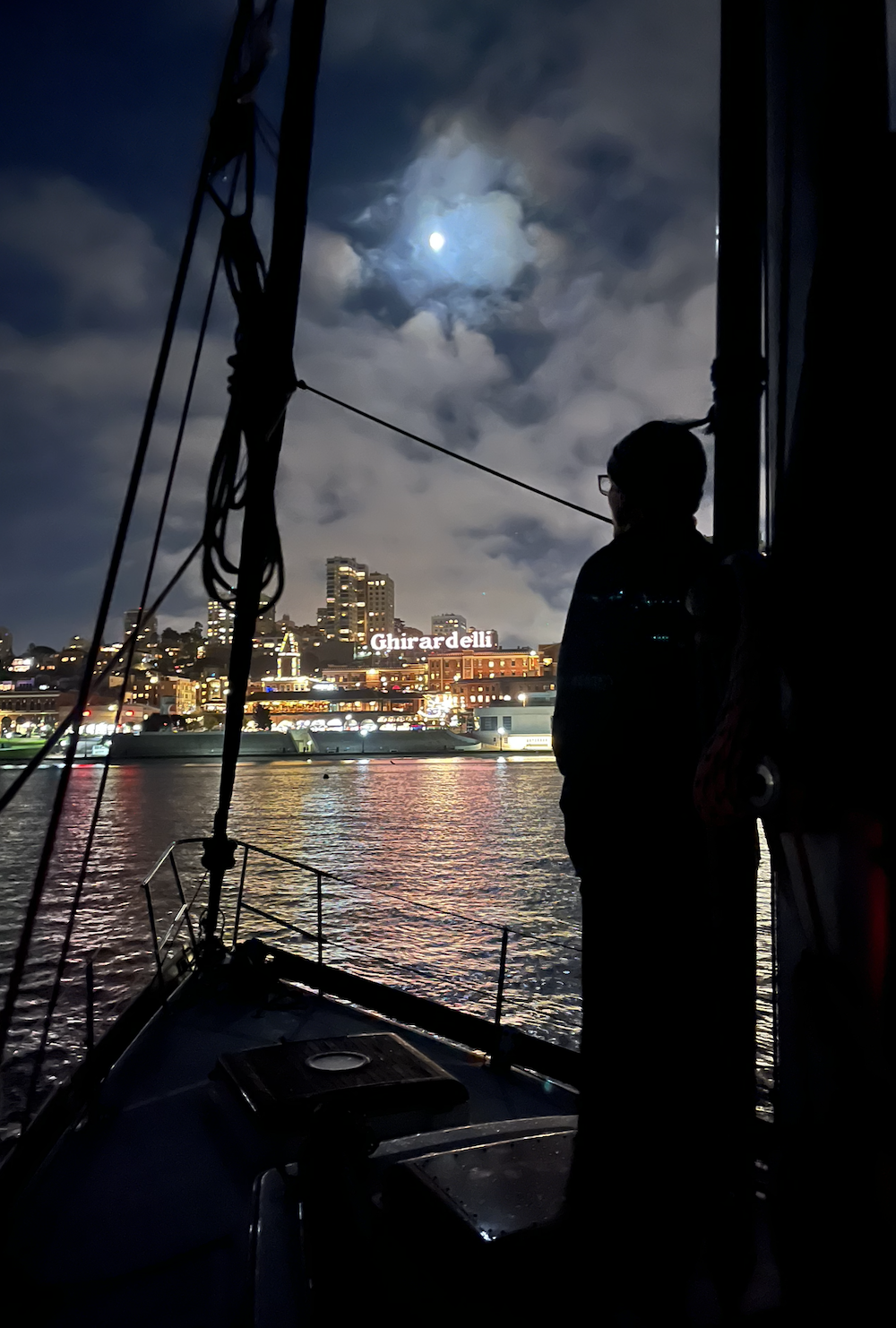 Since the cove caters to recreational swimmers and those seeking some vitamin SEA, motorboats are prohibited meaning it is a sailboat-only anchorage! Sailing vessels with auxiliary engines are authorized to use their engines to maneuver at very low speed within the cove in order to safely enter, anchor, and depart – that’s it that’s all. Outboard engines under 5hp are authorized for dinghies for safe transit to and from the shore, but seriously keep an eye out for swimmers, they are everywhere!
Since the cove caters to recreational swimmers and those seeking some vitamin SEA, motorboats are prohibited meaning it is a sailboat-only anchorage! Sailing vessels with auxiliary engines are authorized to use their engines to maneuver at very low speed within the cove in order to safely enter, anchor, and depart – that’s it that’s all. Outboard engines under 5hp are authorized for dinghies for safe transit to and from the shore, but seriously keep an eye out for swimmers, they are everywhere!
At night, we had a front row view of the Ghirardelli Chocolate neon sign that ran the length of the building located in the iconic Ghirardelli Square, surrounded by bistro lights and other warm glows that romanticized the cityscape. Sounds of urban life sang us to sleep as the sirens rang, cars honked and voices carried across the water all adding to the polyphonic orchestra. “How cool is it that we live here?” I asked Chris, the lights glowing in my eyes as I admired our view from the bow. “Pretty darn cool” he said, confirming my thoughts and cementing them with a warm hug.
Serving Time on The Rock
In addition to the San Francisco waterfront view, you can also see (fog permitting) the Golden Gate and the infamous Alcatraz Island from the anchorage. Visiting the notorious prison has been on my bucket list since I was a kid, specifically since I was 10 years old visiting the bay with my family and purchasing a “property of Alcatraz” shirt from a tourist shop without ever even stepping foot there. What a poser, I know, but with that story in mind I’m sure you can understand my excitement when we had the opportunity to finally visit the prison.
It was a chilly and ominous morning to be standing in line to board the Alcatraz ferry. The terminal was located on Pier 33, just a mile walk from the anchorage, and after beaching the dinghy and locking it to a tree we made it to our destination in 20 minutes flat. We purchased our tickets online and had them scanned before joining the herd of humans waiting to board the ferry like cattle waiting to be driven. Eventually, the double decker ferry arrived and we were welcomed aboard for our very short cruise across to our destination of the day.

Avocet, a neighbor, and Alcatraz on a sunny day
The United States Penitentiary, Alcatraz Island, a.k.a. simply as Alcatraz or “The Rock” was a maximum security federal prison on the 1.25 mile island off the coast of San Francisco, California. Prior to becoming one of the most notorious prisons in history, the site was the most powerful military fort West of the Mississippi in the 1850s. The Army recognized that the cold water (53 F) and swift currents surrounding the island made it an ideal site for a prison, and in 1861 the post was designated as the military prison for the Department of the Pacific
Ironically, while built to guard against a foreign invasion, Alcatraz’s most important military period was during the Civil War (1861-1865). Since it was the only completed fort in the bay, it was vital in protecting San Francisco from Confederate raiders. During the next three decades additional buildings were built to contain up to 150 Army prisoners. Eventually, a prison stockade known as the “Upper Prison” was hastily built on the parade ground and by 1902 there were 461 prisoners on the Island.
With modern weaponry making Alcatraz obsolete as a fort, the Army dropped plans to mount new guns, and instead designated the island as the “Pacific Branch, U.S. Military Prison” in 1907. Work began the following year on the Cellhouse which still stands today. Completed in 1912 with 600 single cells, each with toilet and electricity, the Cellhouse was the largest reinforced concrete building in the world. Shortly after, in 1915, Alcatraz was changed from a military prison to “Pacific Branch, U.S. Disciplinary Barracks.” The new name reflected the growing emphasis on rehabilitation as well as punishment.
During the great depression, military budgets were cut, and the Army was considering closing the Disciplinary Barracks – a perfect opportunity to fulfill the Justice Departments desire to open a super-prison to house incorrigible prisoners. Negotiations moved rapidly, and The United States Department of Justice acquired the Barracks on October 12th 1933. The island was adapted and used as a prison by the Federal Bureau of Prisons in August 1934 after the buildings were modernized and security increased. Given this high security and the island’s location, prison operators believed Alcatraz to be America’s strongest prison and escape-proof… until three men made the impossible happen.
In the 1930s, Alcatraz was already a forbidding place, surrounded by the cold, rough waters of the Pacific. The redesign included tougher iron bars, a series of strategically positioned guard towers, and strict rules, including a dozen checks a day of the prisoners. Escape seemed near impossible until June 12th 1962, when the routine early morning bed check turned out to be anything but. John Anglin, his brother Clarence, and Frank Morris were not in their beds, but instead replaced by cleverly built dummy heads made of plaster, flesh-tone paint, and real human hair that apparently fooled the night guards. The trio escaped through holes they dug in their cell walls using crude tools and found a way out through the service corridor, making it to the seaside and braving the vicious elements of the San Francisco Bay. The prison went into lock down, and an intensive search began and continued through 1979 when the case went cold and closed. No one ever found the men, dead or alive, and the case remains one of the most baffling to this day. (This is a very fun rabbit hole to get lost down!)
Something I failed to realize prior to our visit was that Alcatraz was only in operation for 29 years, closing On March 21st, 1963. Contrary to rumors, it didn’t close because of the aforementioned escapees, but because the institution was too expensive to continue operating, which makes sense given the environment the prison found itself in. How bitterly ironic to close the prison because of the very elements that made it so successful.
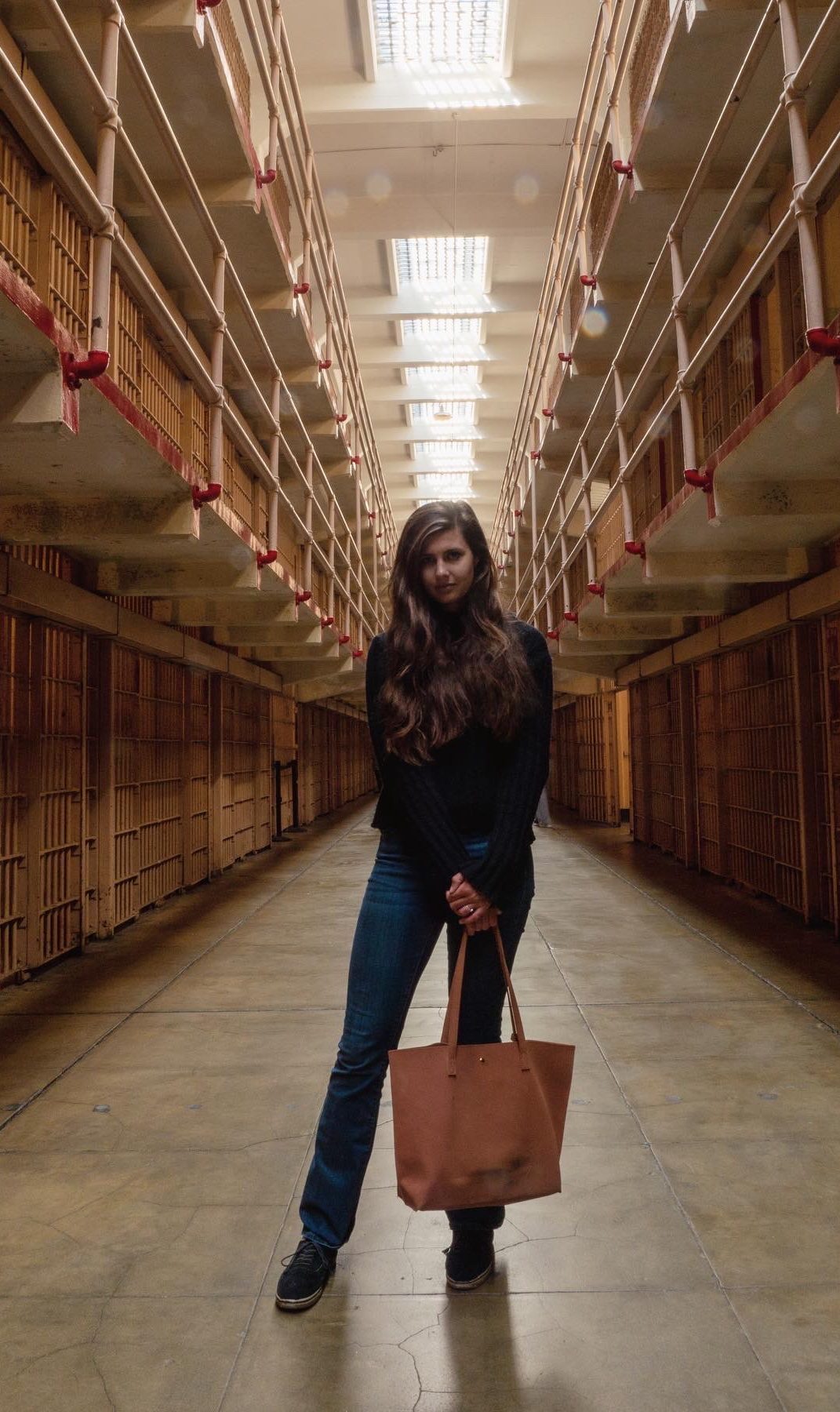
Slow exposure, so you can’t see the hundreds of people around me
“I feel like we’re all zombies” I whispered into Chris’s vacant ear. The other was occupied by his phone, which, like everyone else, was playing the audio tour for the prison. We meandered through each cell block, following the audio tours’ careful directions and doing our best to preserve a bit of personal space amongst the sluggish and overwhelming crowd. The three-story cellhouse included the four main cell blocks – A-block through D-block, the warden’s office, visitation room, the library, and the barber shop. I wasn’t expecting luxury by any means but I was surprised to see that the prison cells typically measured nine feet by five feet with seven foot headroom. They were primitive and lacked privacy, furnished with a bed, desk, washbasin, toilet and few items other than a blanket. D-Block housed the worst inmates, such as the infamous Al “Scarface” Capone, George “Machine Gun” Kelly, Boston mob boss James “Whitey” Bulger and Harlem drug kingpin Ellsworth Raymond “Bumpy” Johnson to name a few. Six cells at D-blocks end were designated as the “The Hole,” solitary confinement.
Outside the prison our nostrils were inundated with the smell of seagull poop since The Rock doubles as a (smelly) seabird sanctuary. As we walked along the barren landscape we fought the cold prevailing winds to stand and admire the historic lighthouse, which I casually mentioned was the first on the west coast. Chris (foolishly) did not believe me, so I fact checked him and concluded that I was correct: Constructed in 1854, the original Alcatraz lighthouse was the first lighthouse built on the US West Coast and served as a navigational aid for over 50 years. The cottage-style lighthouse building was replaced by the taller 95 foot structure in 1909 when it was no longer tall enough to shine over the new cellhouse. In 1963, when the penitentiary closed, the lighthouse became automated and a modern beacon was added.
The park service has really done a wonderful job maintaining and restoring various aspects of the prison grounds that opened as a museum in 1973 – however, it was still not exactly as haunting as I was imagining it to be. Perhaps I over fantasized about the landmark, but I think the lack of interpret signs, museum docents, and a sub-par audio tour resulted in a somewhat disappointing experience that could have been so much more. I learned a lot more through the research I did after the fact. It’s really unfortunate that so many interesting facts (many that I summarized above) were left out of the on-site experience. I think it is still worth its price of admission to say you did it, but I would recommend investing in the VIP Tour experience.
After our three hour sentence on the rock we were reunited with civilization, and starving. “You know… we can grab a bite to eat and maybe get some more of those mushrooms from the ferry terminal” Chris mentioned, already walking in that direction, which was opposite from our boat. I had no complaints though; my stomach growled and I was eager to return to the mushroom shop we first discovered back when we were anchored in Clipper Cove.
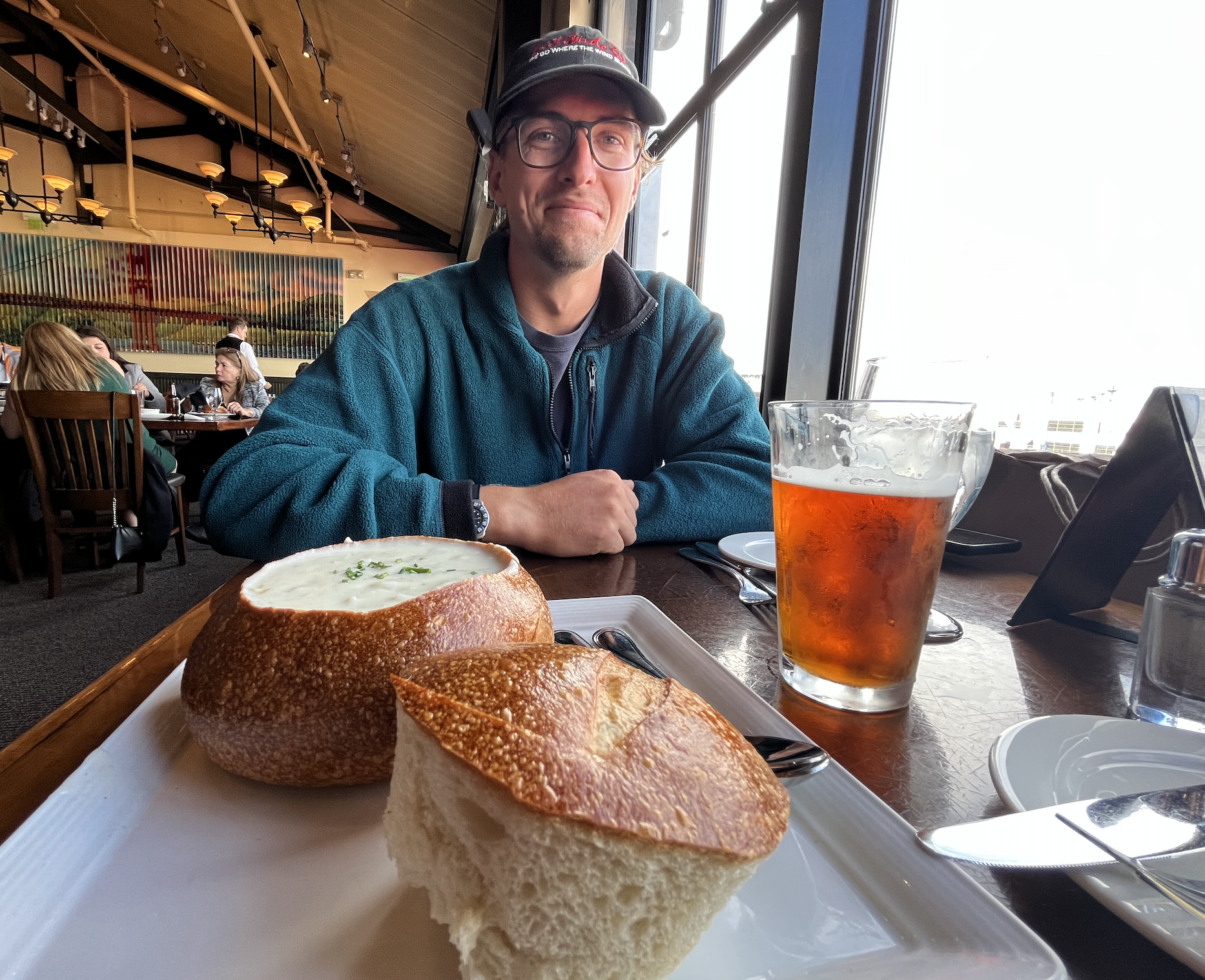 With our selection of mushrooms stashed safely in my bag we decided to stop at Boudin on Fisherman’s Wharf since we were craving some San Francisco sourdough and since it was one of the only iconic eateries still open. Legendary Fisherman’s Wharf restaurants like Aliotos, which was opened in 1925, have had to permanently close in recent years due to the pandemic and increasing lease rent. It was sad to see so many beloved staples of the community boarded up on a busy weeknight, but alas, time waits for no one. Boudin served us well and not only did we get the sourdough we were after, we got it in nearly every form available: as a clam chowder bread bowl, as garlic bread, and served plain on the side. We ate our weight in bread and had no regrets, but it sure did feel good to walk some of the carbs off on our way back to Avocet. Luckily, I was able to make a little room in my stomach for a Ghirardelli sundae, which is an absolute must if given the opportunity, and despite my lactose intolerance it was the perfect way to end to another great day.
With our selection of mushrooms stashed safely in my bag we decided to stop at Boudin on Fisherman’s Wharf since we were craving some San Francisco sourdough and since it was one of the only iconic eateries still open. Legendary Fisherman’s Wharf restaurants like Aliotos, which was opened in 1925, have had to permanently close in recent years due to the pandemic and increasing lease rent. It was sad to see so many beloved staples of the community boarded up on a busy weeknight, but alas, time waits for no one. Boudin served us well and not only did we get the sourdough we were after, we got it in nearly every form available: as a clam chowder bread bowl, as garlic bread, and served plain on the side. We ate our weight in bread and had no regrets, but it sure did feel good to walk some of the carbs off on our way back to Avocet. Luckily, I was able to make a little room in my stomach for a Ghirardelli sundae, which is an absolute must if given the opportunity, and despite my lactose intolerance it was the perfect way to end to another great day.
Golden State of Mind
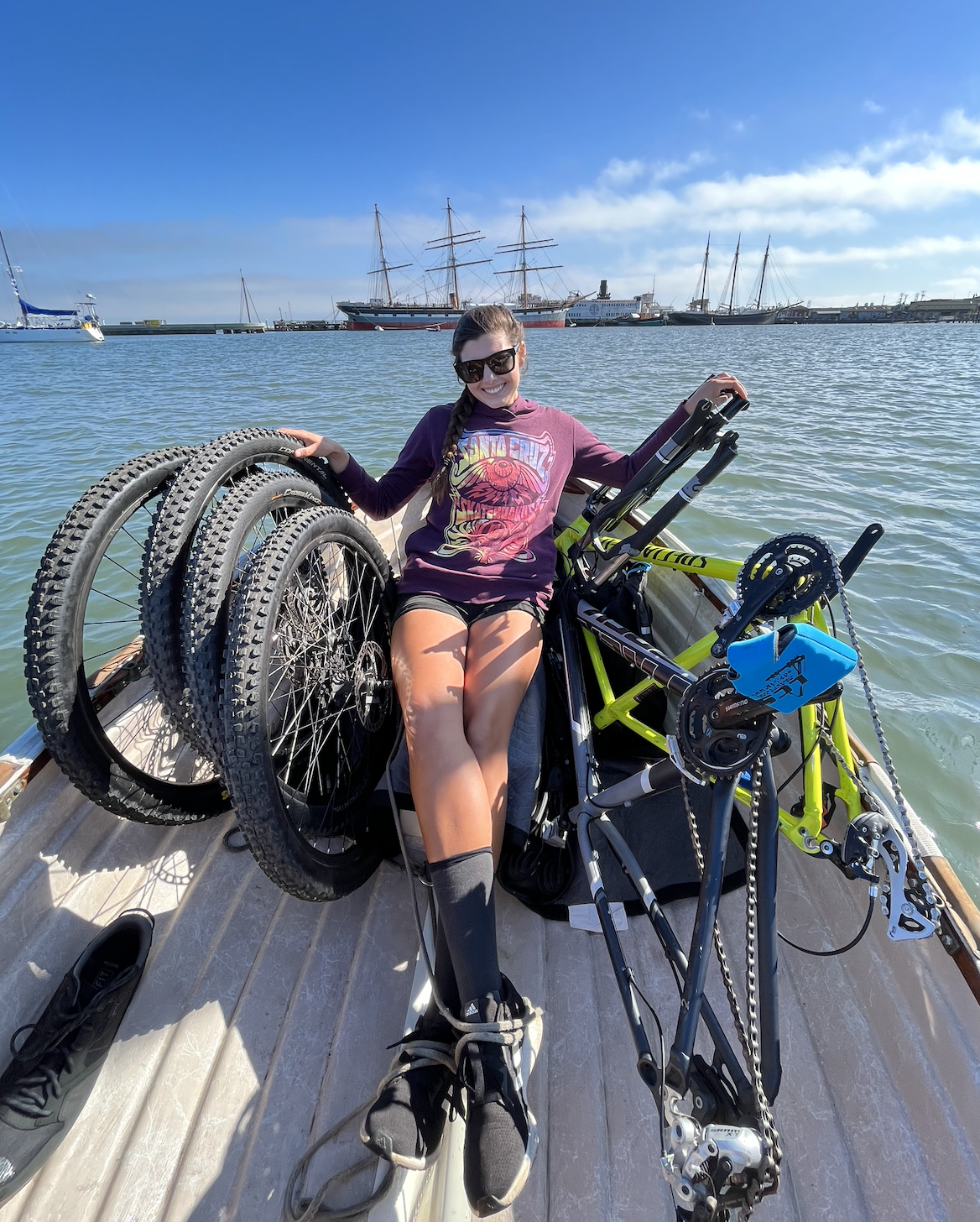 Since it was so easy to beach the dinghy, we decided to bring the bikes to shore for a ride across the Golden Gate Bridge; a 10.5 mile round trip ride, from our anchorage to the other side of the bridge and back.
Since it was so easy to beach the dinghy, we decided to bring the bikes to shore for a ride across the Golden Gate Bridge; a 10.5 mile round trip ride, from our anchorage to the other side of the bridge and back.
You got this… you got this… I silently reassured myself as I pedaled up yet another hill. Chris was waiting patiently at the top, knowing better than to try and cheer me on which I would only later say was patronizing. Although we had been getting our steps in and biking as much as we could, I was still not a fan of uphill cycling but never let my distaste deter me from the challenge. On the contrary, I would hype myself up and believe in my heart of hearts that it would all be worth it, after all, it usually was, and even if it wasn’t what goes up must come down and I sure do enjoy that part. “Proud of you” Chris said, carefully, as I huffed and puffed reaching for my water bottle before continuing along the trail.
We biked along Marina Green, and through the meadows and marshes of Crissy Field, watching Karl the fog stretch his gray fingers through the Gate and over the bay. The closer we got to the Gate the more bikers we encountered on cruisers, tandems, surreys and the dreaded cart-pulling-parents that took up the entire bike lane, which wasn’t a real issue until we made it to the Golden Gate entrance. As much as I hate biking alongside traffic, I was thankful for the chain link fence that separated us from the northbound cars that together created the booming sound of progress. To our right, was the long drop 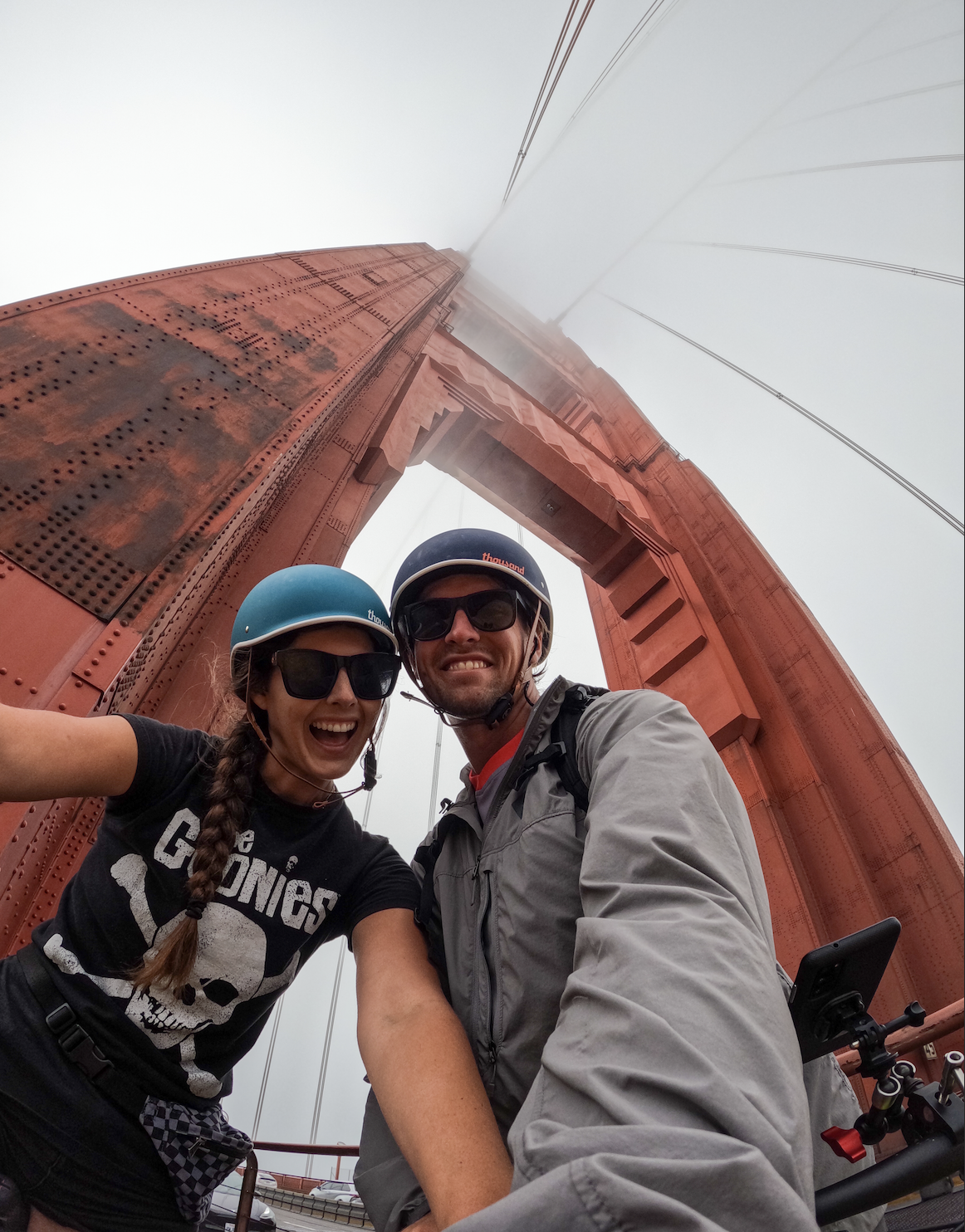 into the ocean below, hidden behind yet another false security fence designed to deter, not necessarily hold back. Prepared for a long ride I dressed in shorts and a T-shirt, not fully expecting Karl to join us so early on, and definitely did not anticipate the wind on his tail. My sweat froze against my skin but the blood in my veins kept me warm as we did our best to share the path, weaving through the space-takers and slow movers to keep our movement. Eventually, we reached the other side where the sun’s rays bathed us, breaking us free from the cold.
into the ocean below, hidden behind yet another false security fence designed to deter, not necessarily hold back. Prepared for a long ride I dressed in shorts and a T-shirt, not fully expecting Karl to join us so early on, and definitely did not anticipate the wind on his tail. My sweat froze against my skin but the blood in my veins kept me warm as we did our best to share the path, weaving through the space-takers and slow movers to keep our movement. Eventually, we reached the other side where the sun’s rays bathed us, breaking us free from the cold.
We spent a moment catching our breath and watching the Fog dance in and out of the gate, teasing tourists with just the tip of the two towers before engulfing them in gray. “Ready for the ride back?” Chris asked, arms stretched out to reveal his wide wingspan. I snapped a photo then buckled my helmet once more, ready for our ride back to Aquatic Cove. “Want to hear something cool?” I called Chris ahead of me. I couldn’t hear his response, but the word-like-noise he made sounded of intrigue so I carried on. “We have officially sailed under, flown over, and biked across the Golden Gate Bridge – what a cool trifecta!” At that moment Chris stopped at the top of a hill to turn around and agree it was “a very cool trifecta, indeed” before we dropped down and finished the last mile of our ride.
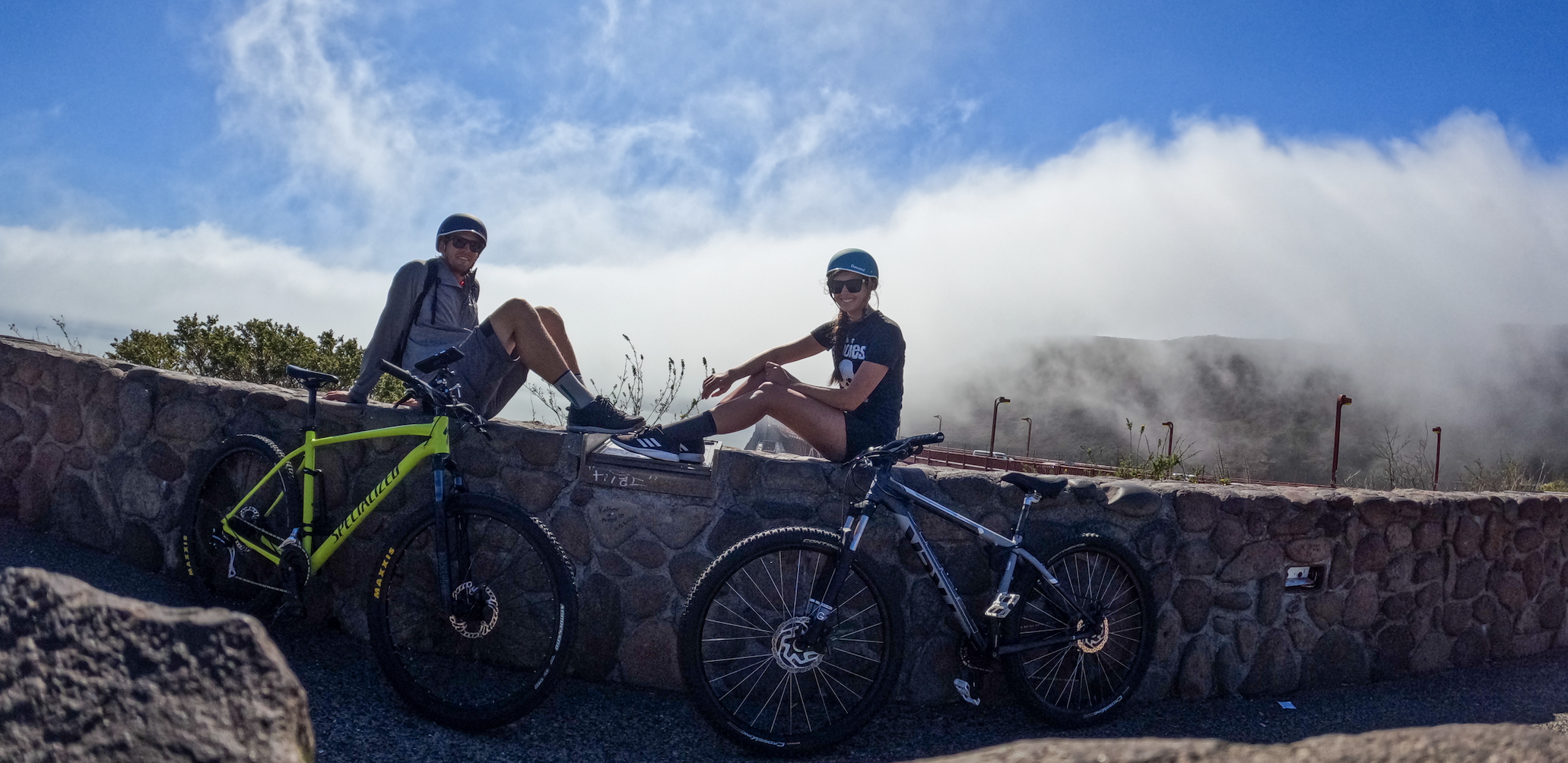
The Golden Gate is right in that fog bank
Back in the sand at the Maritime Museum we broke down our bikes and loaded them into the dinghy before we walked around the grounds. We followed the sound of sanders to one of the workshops where a group of volunteers worked tirelessly on a wooden Monterey fishing boat. Chris and I stood watching them work for a moment before we were approached by a very friendly man named Jim. “Fascinating stuff, huh?” he asked, before introducing himself as one of the museum specialists. He had been with the museum for a while and was surprised to hear that we were not only avid maritime history nerds, but had also sailed here aboard our boat that was anchored in the bay. Taken by our introduction, he was kind enough to give us a closer look at the Monterey restoration welcoming us into the workshop. “You know, the guy who did this piece was really a craftsman, you two would get along great if you are into this!” he said, and almost on cue another person joined our trio at the stern of the fishing boat.
“Ah! There he is. Karny, this is Chris and Marissa, they-” “Actually… I know them” He said as Chris and I frantically flipped through our mental rolodex of contacts. Clearly our looks showed our confusion and he continued “I messaged you online and suggested you come here, I’m glad you did! I have followed you guys online for a while, it’s great to meet you in person. I have a Cheoy Lee as well!” Karnell “Karny” was a museum specialist and volunteer organizer who clearly had a passion for restoration. As he and Chris went off in the weeds together on a discussion about densities of wood, I found a pause to kindly suggest that we reconvene the next day and film a segment with Karny about the work he does with the museum since he would be a great candidate for starring in one of our upcoming episodes; plus I desperately wanted to change out of my sweaty bike clothes. So, back to Avocet we went for our final night in the dreamy cove.

Maritime Museum
“Don’t forget the batteries” Chris said from the cockpit. I was just grabbing the last of our things before we loaded up the dinghy and made our way to shore. Karnell was waiting for us with his volunteers working away on the Monterey fishing boat we had seen the day prior. We set up the interview outside of the shop to strategically evade the sounds of boatwork as best as we could so we could listen intently to Karny’s lesson on the Historical Park.
San Francisco Maritime National Historical Park offers visitors the sights, sounds, smells and stories of Pacific Coast maritime history. The park used to be referred to as the San Francisco Maritime Museum, however the name changed in 1978 when the collections were acquired by the National Park Service. Today’s San Francisco Maritime National Historical Park was authorized in 1988; the maritime museum is among the park’s many cultural resources. The park also incorporates the Aquatic Park Historic District, bounded by Van Ness Avenue, Polk Street, and Hyde Street Pier which once upon a time was the principal automobile ferry terminal.

Prior to the opening of the Golden Gate Bridge and the San Francisco–Oakland Bay Bridge, Hyde Street Pier was designated part of the U.S. Route 101 and U.S. Route 40. Today, the historic pier is home to the floating museum of various historic ships. The Park not only includes a wonderful fleet of historic ships, but also a Visitor Center, Maritime Museum, Maritime Research Center, and the aforementioned Aquatic Park Historic District.
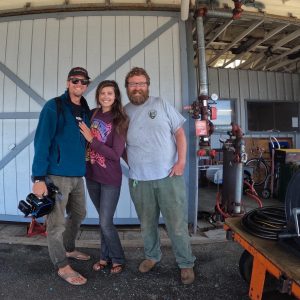
Chris, Me, Karnell
“So how does someone get involved with the museum?” I asked from behind Chris’s shoulder. Through a grin, Karny responded that “Eager volunteers can connect with me and I will put them to work! Volunteers at the San Francisco Maritime National Historical Park will not only stay active and involved, they will have the chance to teach others, learn new skills and perhaps most importantly help preserve these unique resources and techniques for future generations.” When we wrapped the interview, we were welcomed back into the workshop that was full of volunteers working away; from pulling planking to installing new hardware they were really getting into it.
As we were saying our goodbyes, Karny handed us one of the Monterey’s original galvanized shipbuilding nails. I rolled the uniquely shaped metal in my hand when a new one was placed beside it. One of the volunteers had access to a 3D printer and was able to recreate the original nail design, so the restoration could be as accurate as possible. “Souvenirs” Karny said as I graciously took the nails and put them in my pocket. How cool is it to have a piece of maritime history?
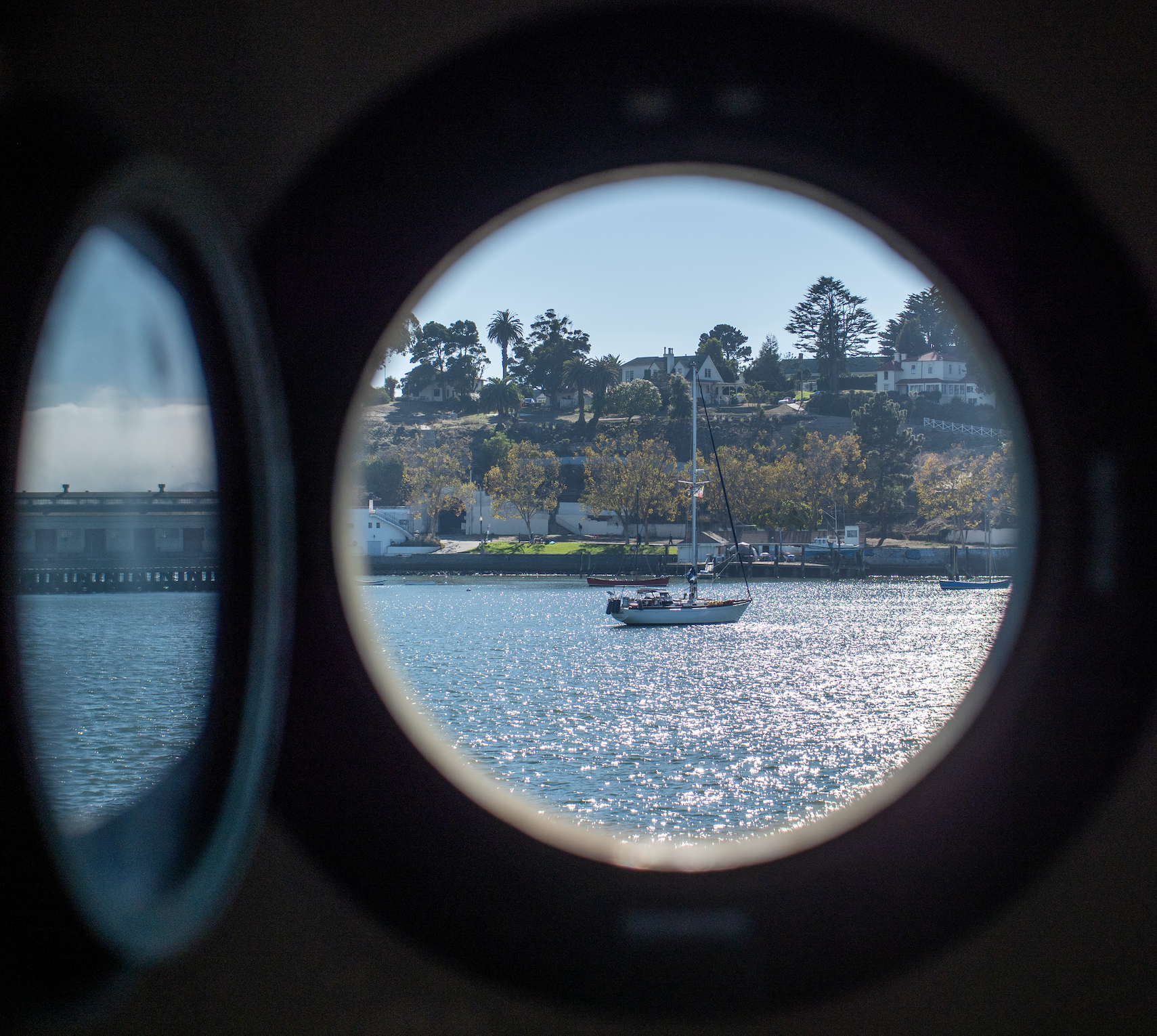 Before we headed back to the mothership, we decided to board some of Avocet’s ancestors, being particularly taken by the tall ship Balclutha. The 300 foot, three-masted, steel-hulled, square-rigged ship was built to carry a variety of cargo all over the world. Launched in 1886 near Glasgow, Scotland, the ship carried goods around Cape Horn 17 times! It took a crew of about 26 to handle the ship at sea with her complex rigging and 25 sails – and I’m sure it took all that and more to keep her wood finishes in tip top shape. As we boarded the vessel, we couldn’t help but notice Avocet in the distance looking like a lifeboat by comparison. We walked all around the ship, inside and out, admiring the restorations the museum had in progress such as rebuilding the ships wooden spars – which was eerily reminiscent of the bowsprit Chris built for our friends Hans Christian, Remedy.
Before we headed back to the mothership, we decided to board some of Avocet’s ancestors, being particularly taken by the tall ship Balclutha. The 300 foot, three-masted, steel-hulled, square-rigged ship was built to carry a variety of cargo all over the world. Launched in 1886 near Glasgow, Scotland, the ship carried goods around Cape Horn 17 times! It took a crew of about 26 to handle the ship at sea with her complex rigging and 25 sails – and I’m sure it took all that and more to keep her wood finishes in tip top shape. As we boarded the vessel, we couldn’t help but notice Avocet in the distance looking like a lifeboat by comparison. We walked all around the ship, inside and out, admiring the restorations the museum had in progress such as rebuilding the ships wooden spars – which was eerily reminiscent of the bowsprit Chris built for our friends Hans Christian, Remedy.
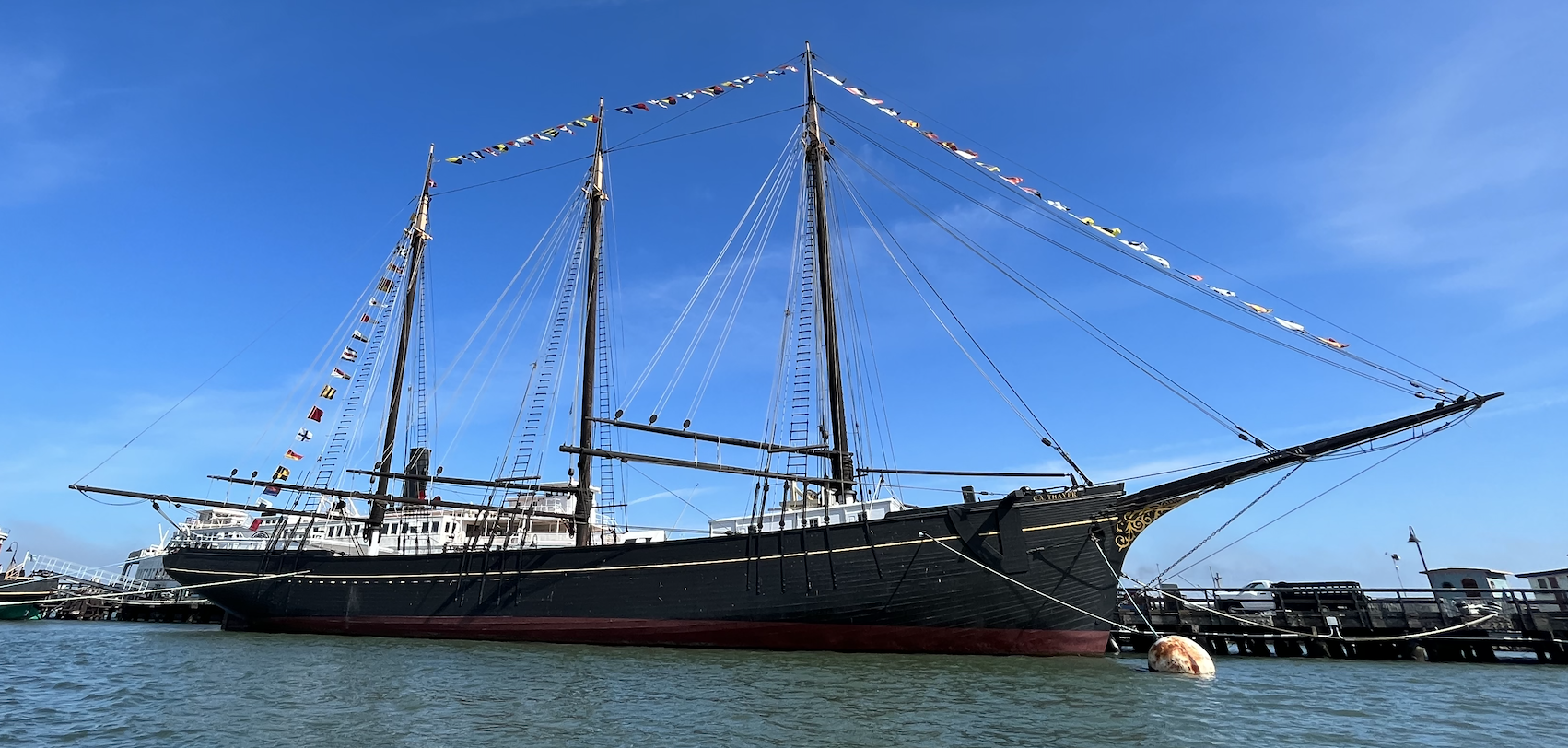
Balclutha
“You guys better get out of here while you can,” a park ranger said in passing. “With Fleet Week coming up this cove gets busy and you can’t leave once the restriction box is in place” she continued to say. We thanked her for the insight and made our way back to Avocet, who was looking eager to catch wind in her sails again. The breeze had just begun to pick up outside the cove as the bay became alive with white topped wind waves, still small, but sporty nonetheless.
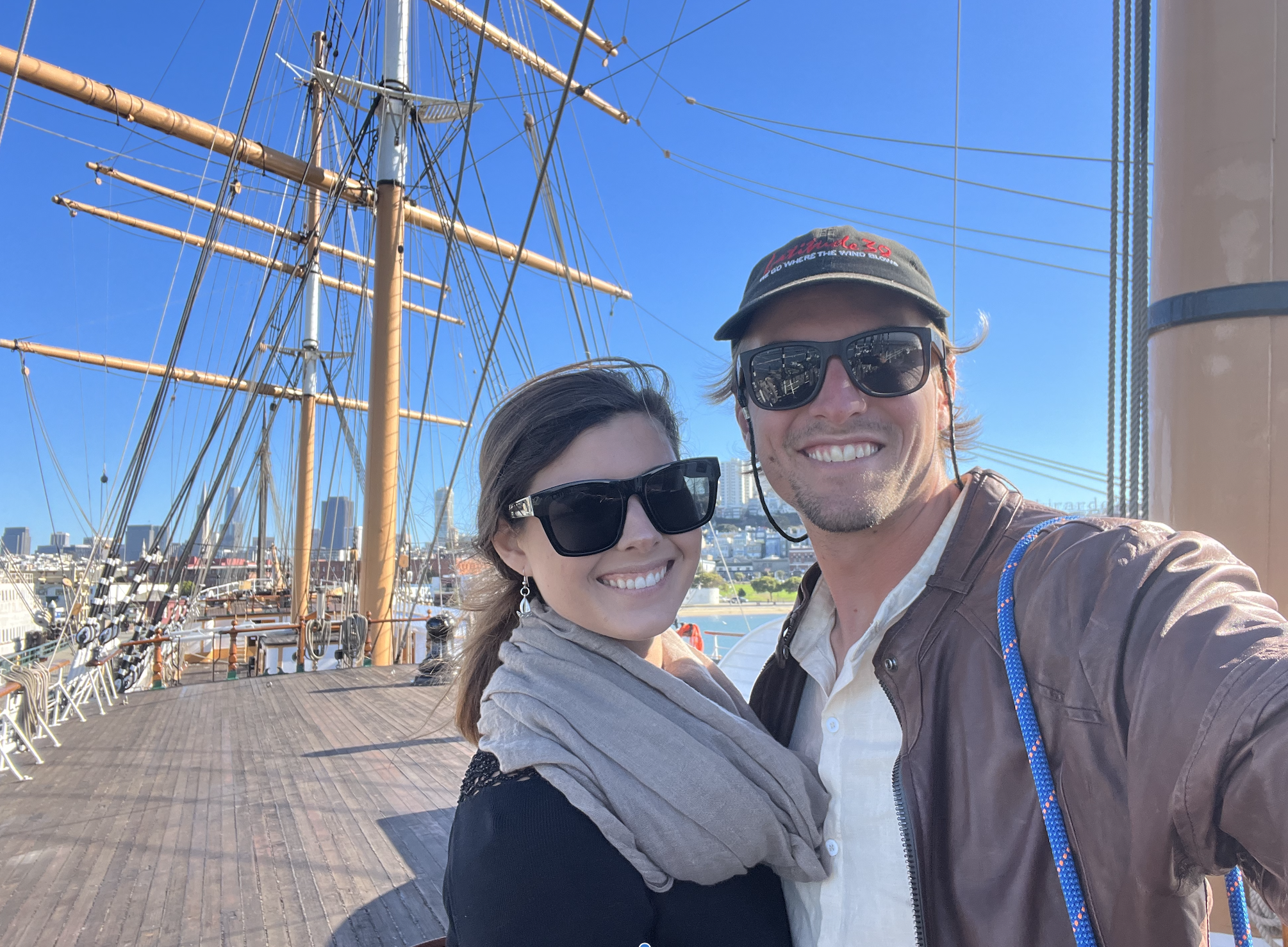 As the cove shrank behind us, I couldn’t help but try to imagine the chaos Fleet Week would bring with an airshow overhead, boat parades, and tourists galore crowding the shoreline and fighting for the best vantage point which just had to be Aquatic Park given its proximity to the central activities. “I think that may be my favorite anchorage yet” Chris said as he returned to the cockpit. The main was raised with one reef in as we prepared to meet the windline.
As the cove shrank behind us, I couldn’t help but try to imagine the chaos Fleet Week would bring with an airshow overhead, boat parades, and tourists galore crowding the shoreline and fighting for the best vantage point which just had to be Aquatic Park given its proximity to the central activities. “I think that may be my favorite anchorage yet” Chris said as he returned to the cockpit. The main was raised with one reef in as we prepared to meet the windline.
Although we were leaving party central, we would definitely be partaking in Fleet Week festivities, welcoming aboard some new crew for the fun – but first we had to rendezvous with the Neely’s old sailing grounds on the East Bay. Berkeley, here we come!
Fair winds,
Marissa, Chris and Cleo
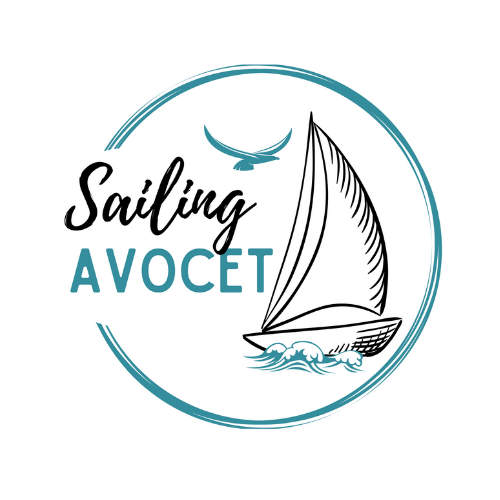


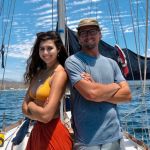

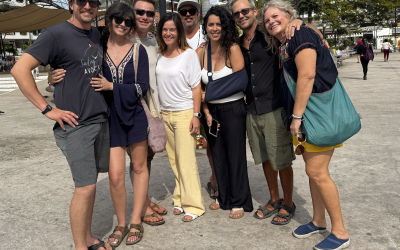
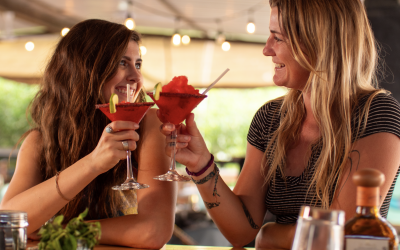

0 Comments